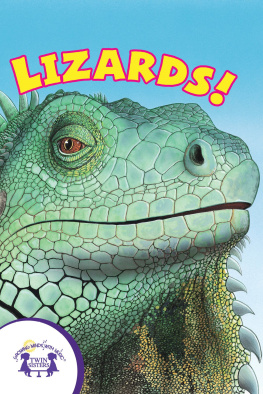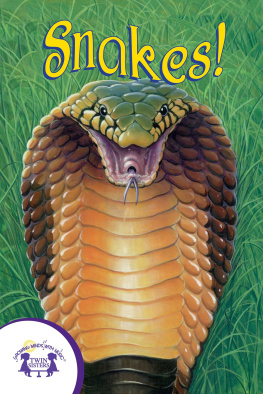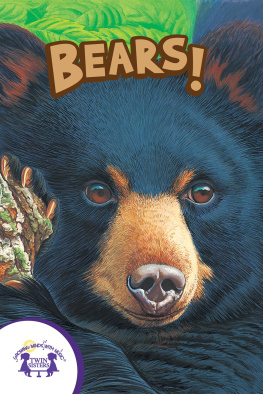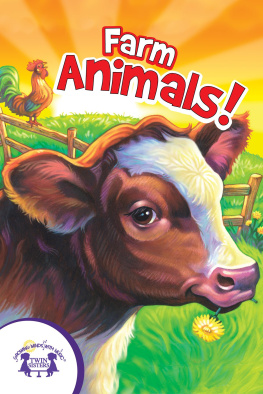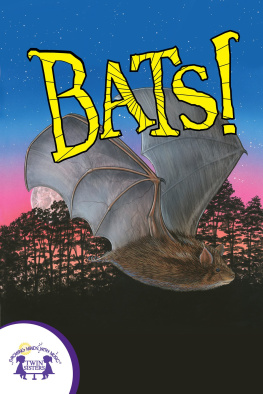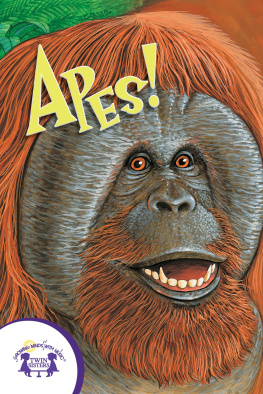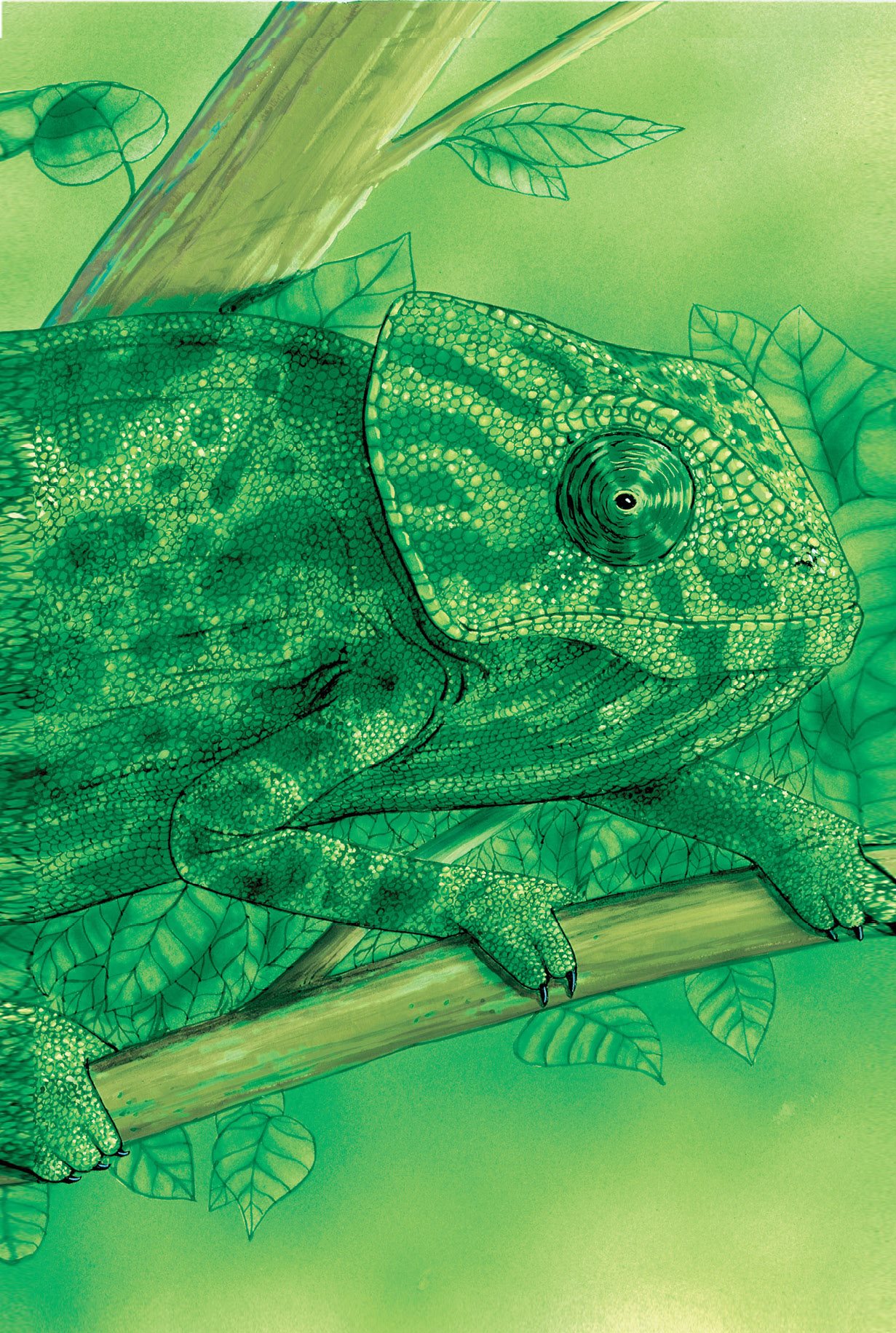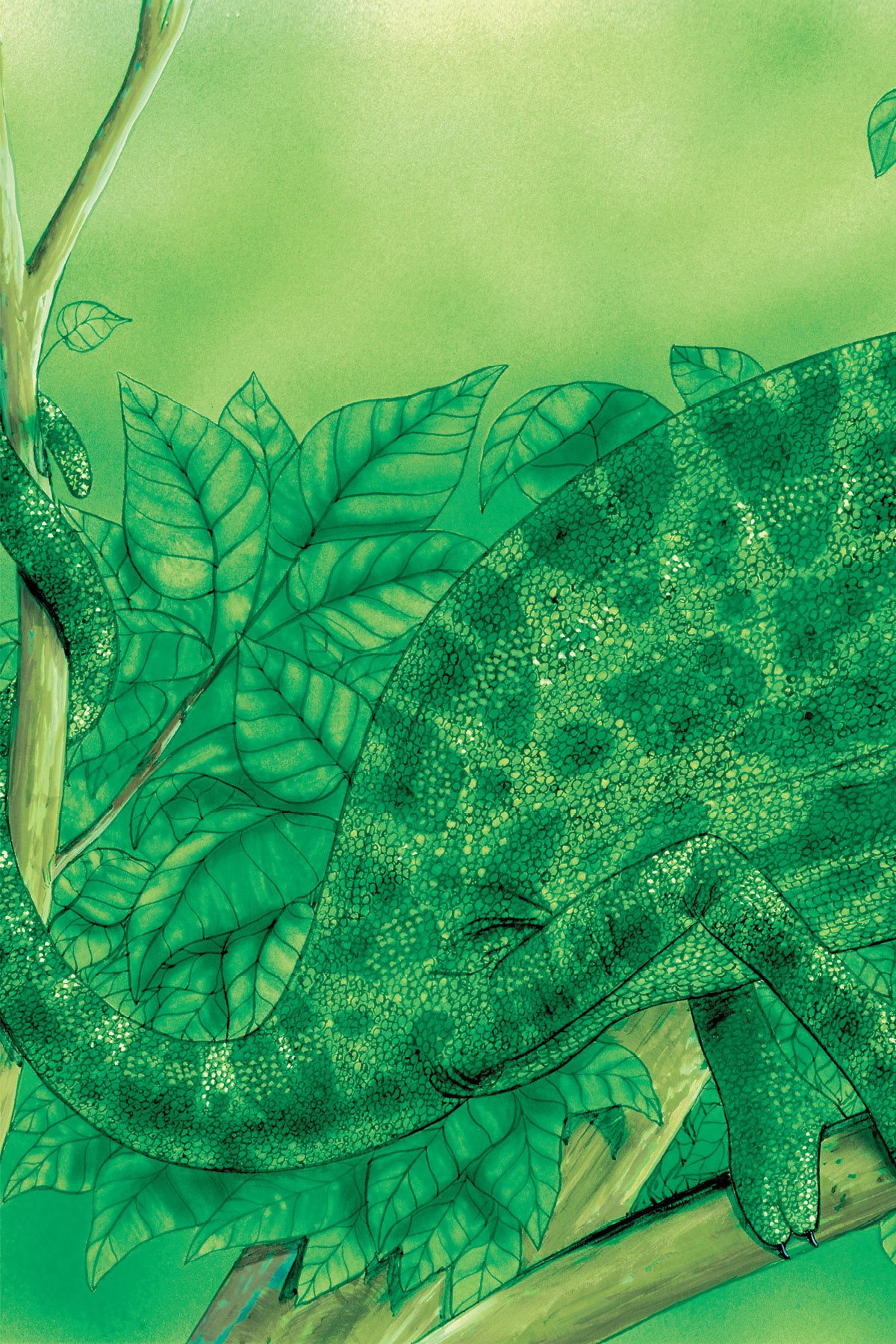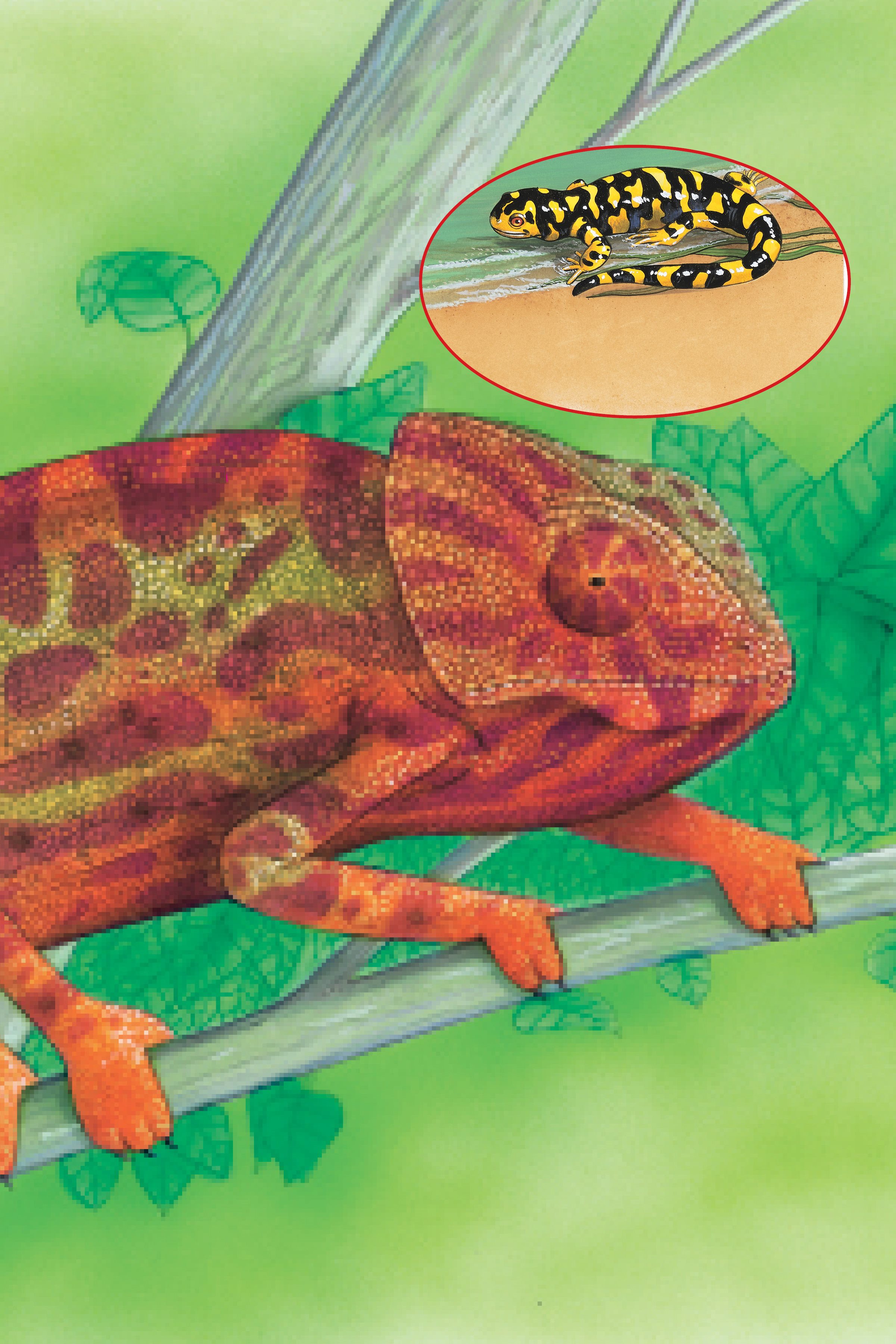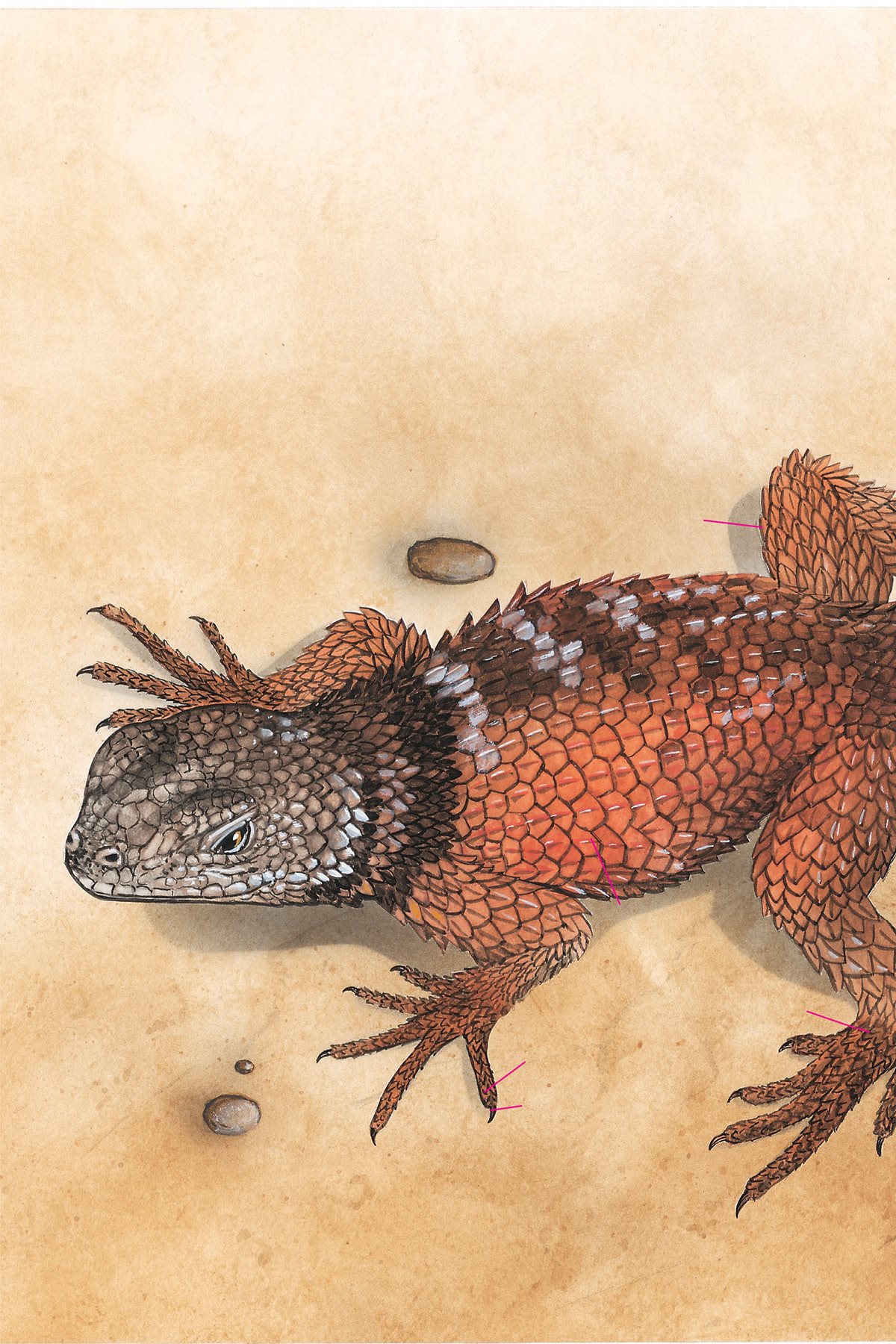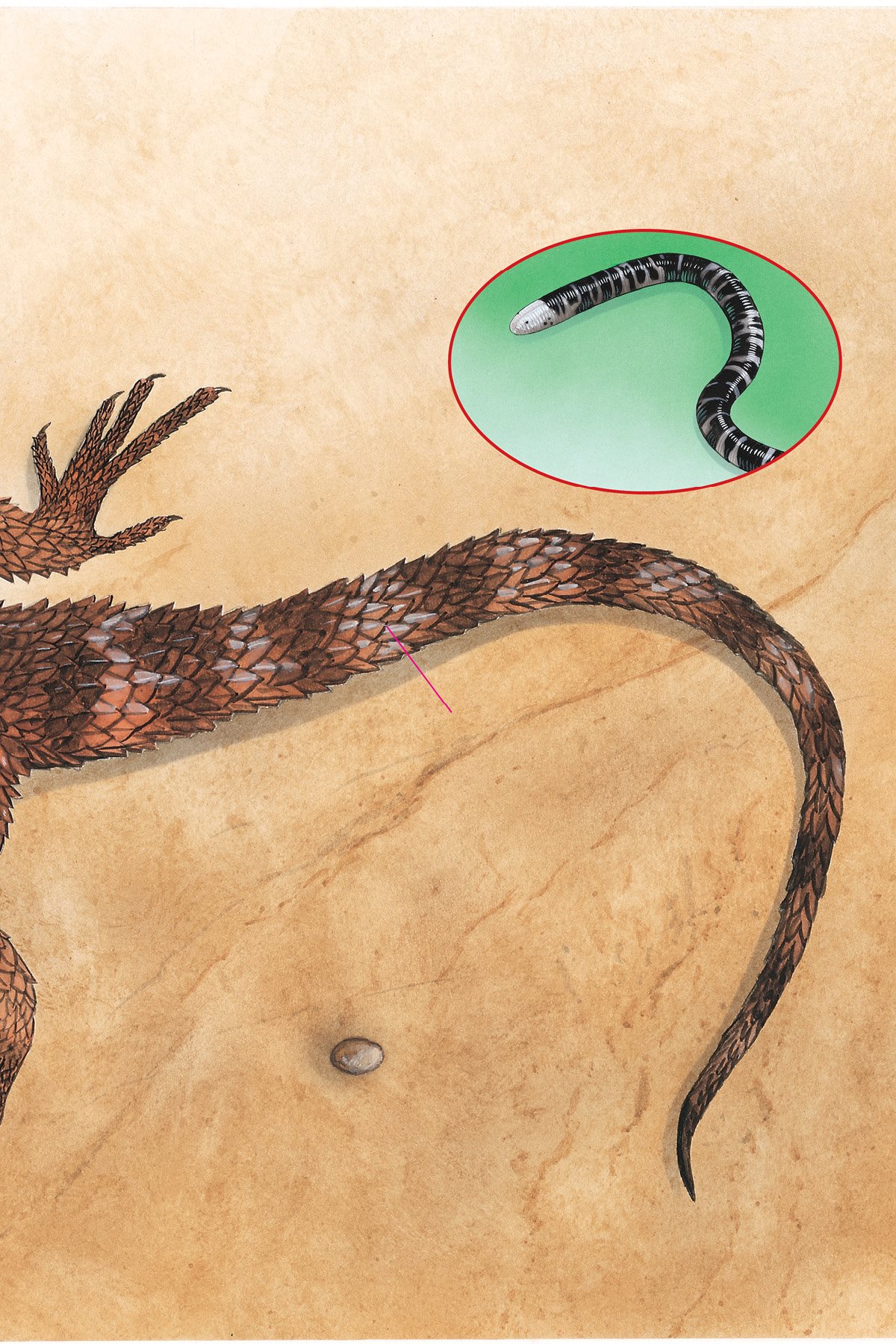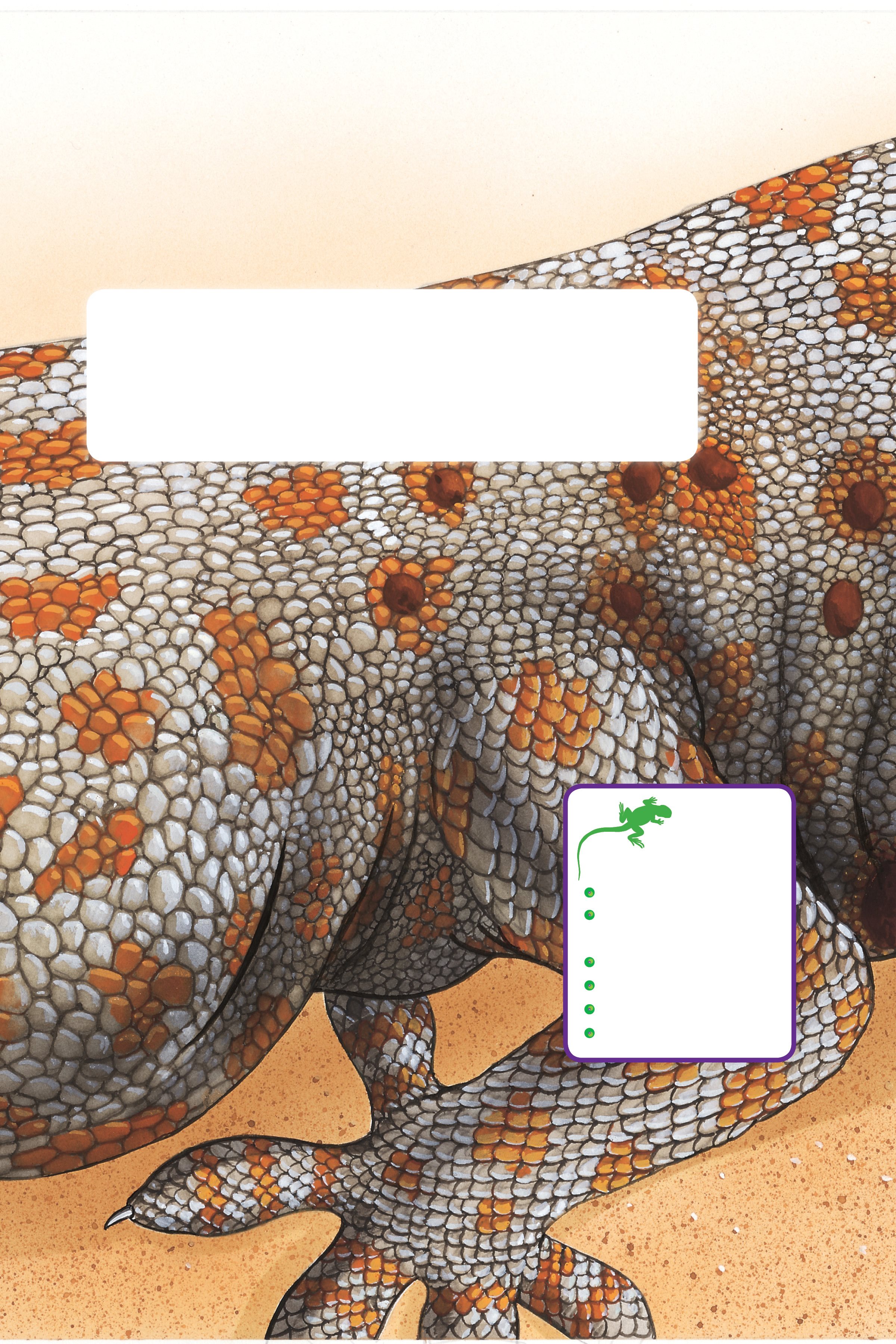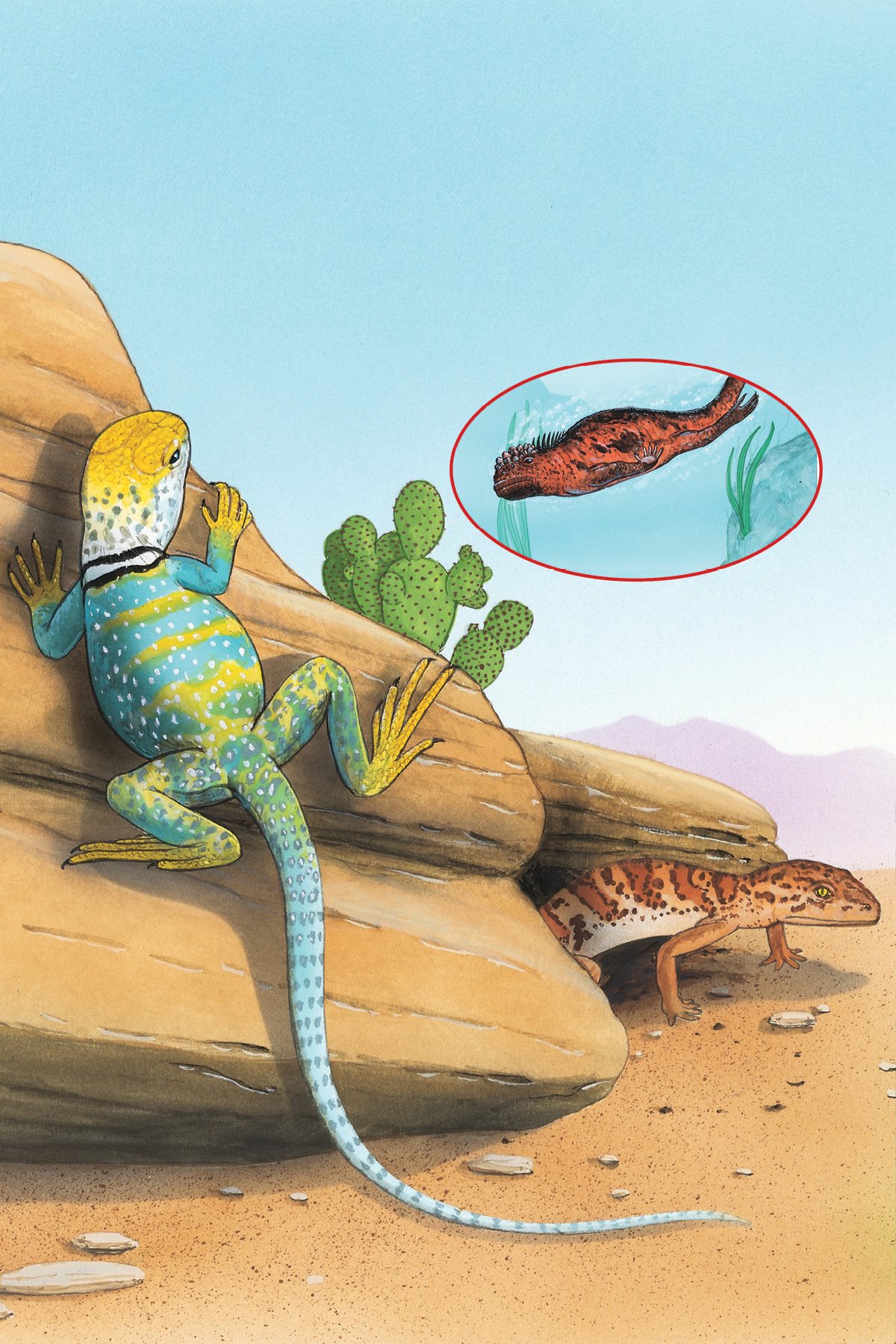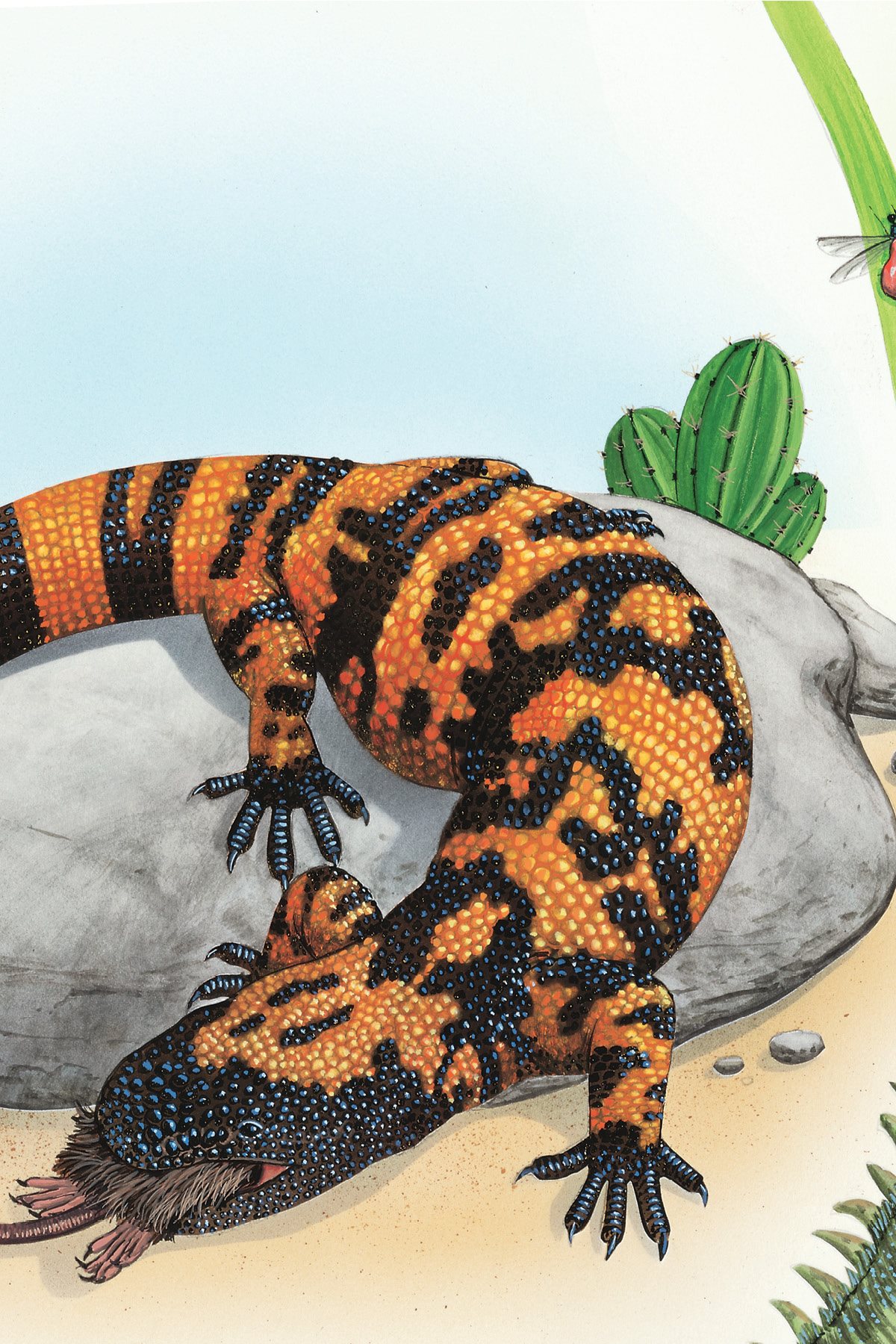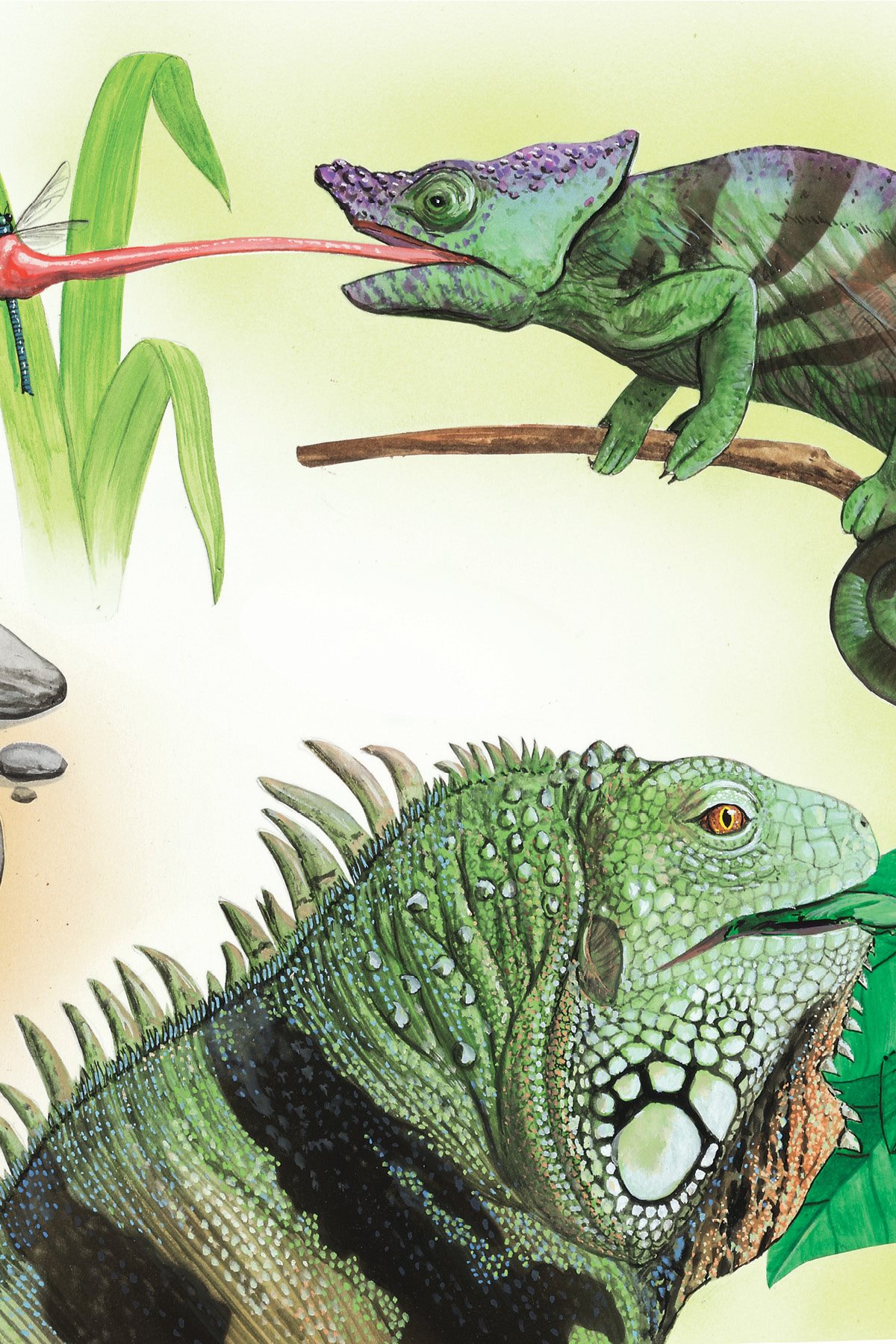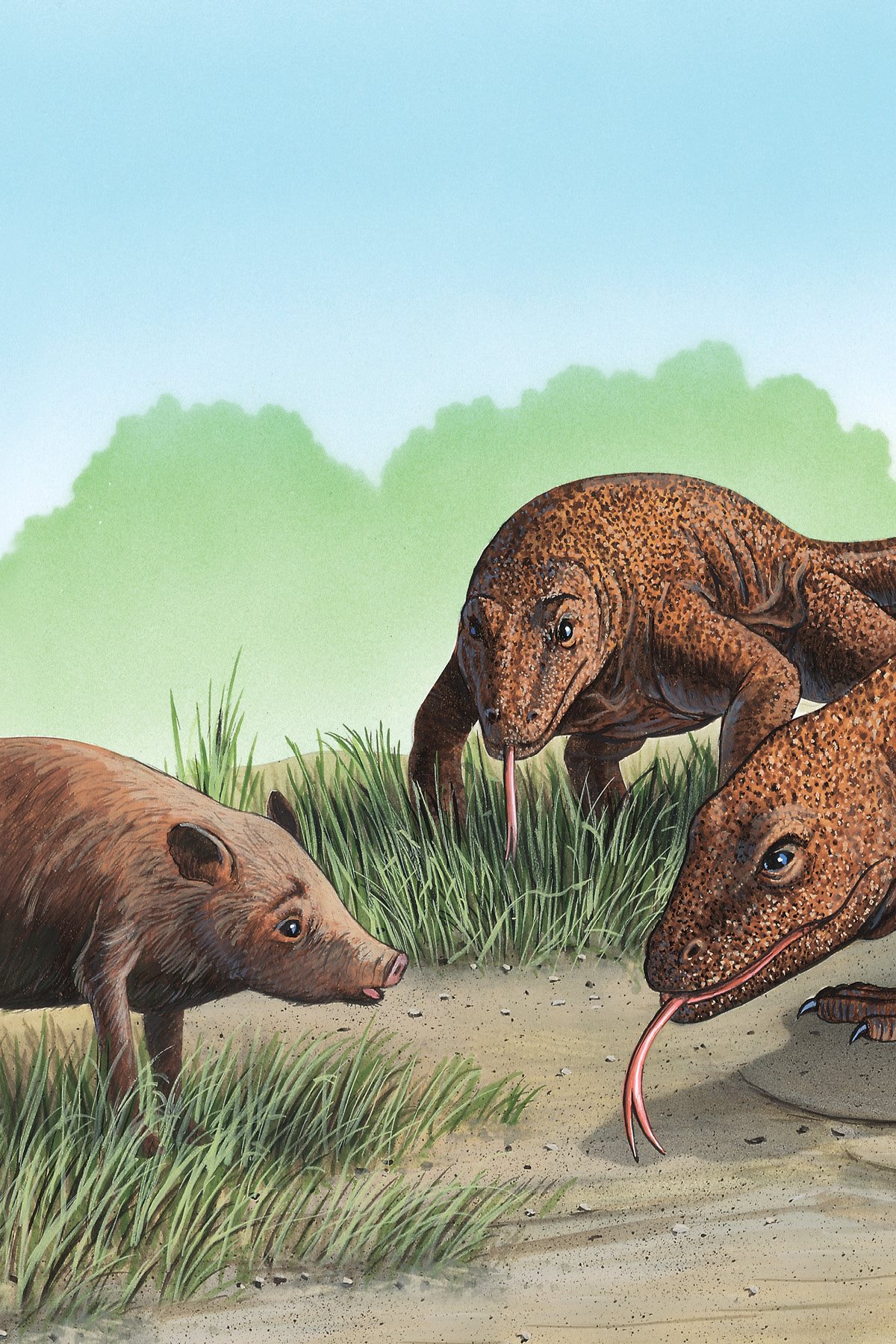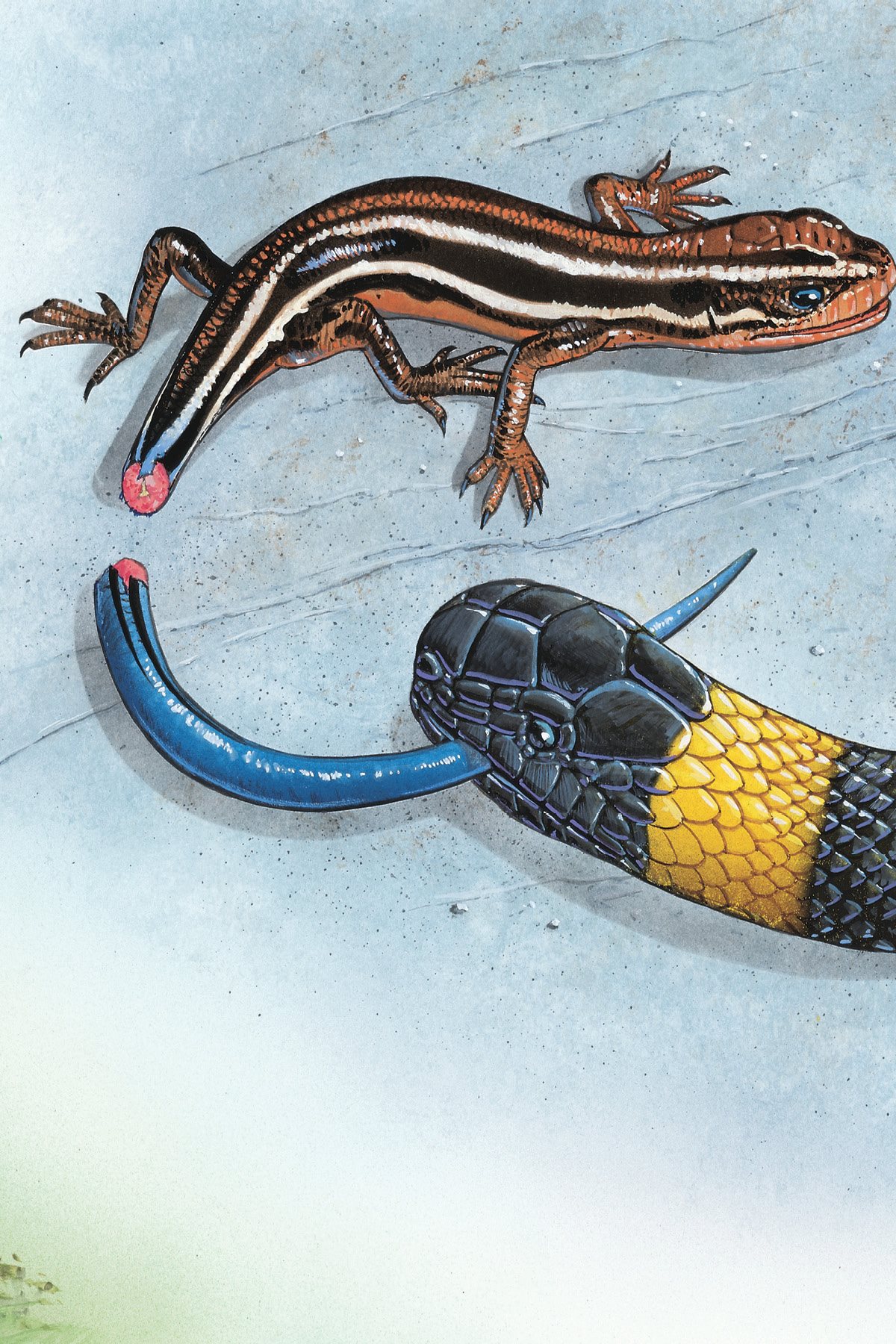There
are almost 4300 different kinds of them. They can be as small as a mouse or as long as a car. Some can change color, some can walk across water, and some can even glide like a kite!
What are they?
(Hint: Turn the page to find out...)
Its a kind of animal called a reptile . All reptiles are cold - blooded, which means that the temperature of their bodies is the same as the temperature of the air around them. To keep warm, a lizard often lies in the sun. But to cool down, it hides in the shade.
Answer:
Lizards!
What is a lizard?
Snakes, alligators, crocodiles, and turtles are some of the lizards reptile relatives. The lizard is also related to the dinosaurs gigantic prehistoric reptiles that roamed the earth millions of years ago! (What a family tree!)
Although they may look like lizards, salamanders are not reptiles. They are amphibians, animals that live both on land and in water.
Chameleon
A lizards body is covered with hard, little plates called scales . They protect the lizards skin, keeping it dry on the outside and moist on the inside.
Most lizards have four legs, with five lizard toes on each foot. Each toe has a sharp nail or claw at the end. Lizards use their claws to climb and to fight. (Better trim those, buddy!)
scale
leg
foot
toe
claw
Crevice spiny lizard
Lizards also have long tails. Some can use their tails to help them climb and grip things. Others use their tails like a whip to defend themselves!
tail
Worm lizards dont have legs!
Tokay gecko
Lizards have two big eyes and can see very well. Some lizards can even look in two directions at the same time! Unlike snakes, lizards have eyelids. And except in a few species, the eyelids can move up and down!
Many lizards have long, sticky tongues. And, just like their snake cousins, they use their tongues to smell by tasting scent particles in the air.
Lizards dont have outside ears like you and me. But they can hear through two small ear openings on either side of their head.
Body Parts
Most lizards have:
Scales
Four legs, five toes on each foot
A long tail
eyes with eyelids
A long tongue
Ear openings
Banded gecko
Where do lizards live?
All over the world in fact, they can be found on every continent except icy Antarctica. Lizards HATE the cold, so they usually hang out where the climate is hot in blistering deserts, steamy rain forests, sunny mountains, and warm plains.
Collared lizard
The marine iguana spends a lot of time underwater!
Lizards make their homes on the ground, in the trees, or in underground burrows. Some even like to live in peoples houses. Lizards are everywhere!
Anole
Iguana
s Live
On every continent except Antarctica
In warm regions
In deserts, rain forests, mountains, lowland plains
On the ground, in trees, in underground burrows
Mostly insects and small animals ants, flies, centipedes, spiders, scorpions, worms, grubs, snails, and slugs. (Yum!) Some lizards are large enough to eat mice, birds, and even other lizards. A few lizards eat plants, vegetables, and fruits.
Gila monster
What do lizards eat?
Iguana
Chameleon
The chameleon lashes out its long, sticky tongue like a lasso then reels an unsuspecting bug into its mouth!
The largest lizard of all, the Komodo dragon, is big enough to kill and eat wild pigs, goats, and even deer. Better not get too close or it might try to eat YOU!
Young Komodo dragons have to hide up in trees. Otherwise, they will become an adult Komodo dragons lunch!
s Eat
Ants, flies, centipedes, spiders, scorpions
Worms, grubs, snails, slugs
Plants, vegetables, fruit
Larger lizards eat mice, birds, and other lizards.
Komodo dragons eat wild pigs, sheep, and deer.
How do lizards protect themselves?
Any way they can! Lizards have many enemies, including raccoons, otters, foxes, opossums, snakes, hawks, badgers, and other lizards. So they have many different ways of defending themselves.
Most lizards just run and hide, or play dead. Some have sharp horns and spines. Others flash brightly colored body parts or hiss loudly to keep enemies away.
Blue - tongued skink
Believe it or not, many lizards can actually break off their own tail if attacked. The tail will continue to move, and hopefully distract a hungry animal long enough for a getaway. (Dont worry! The tail grows back in a few weeks.)

